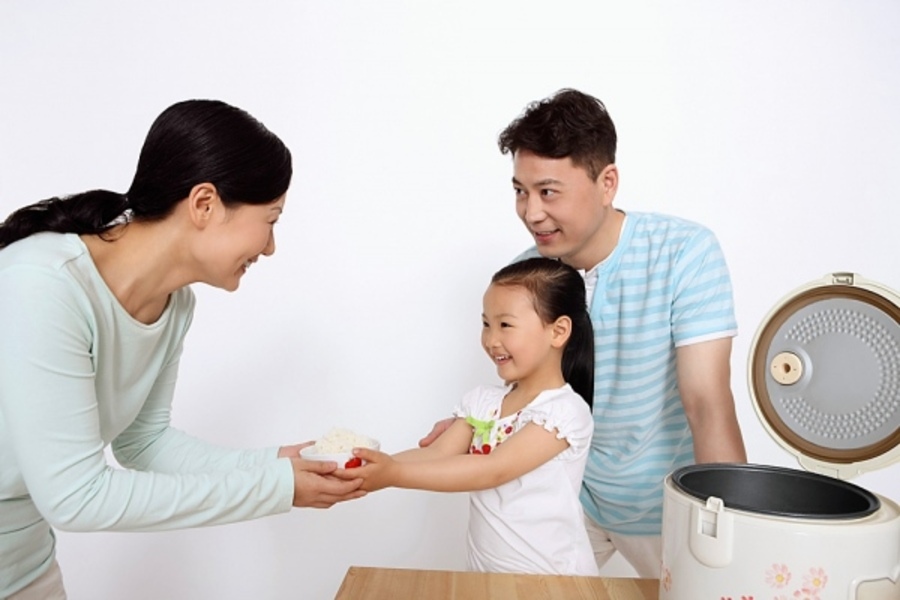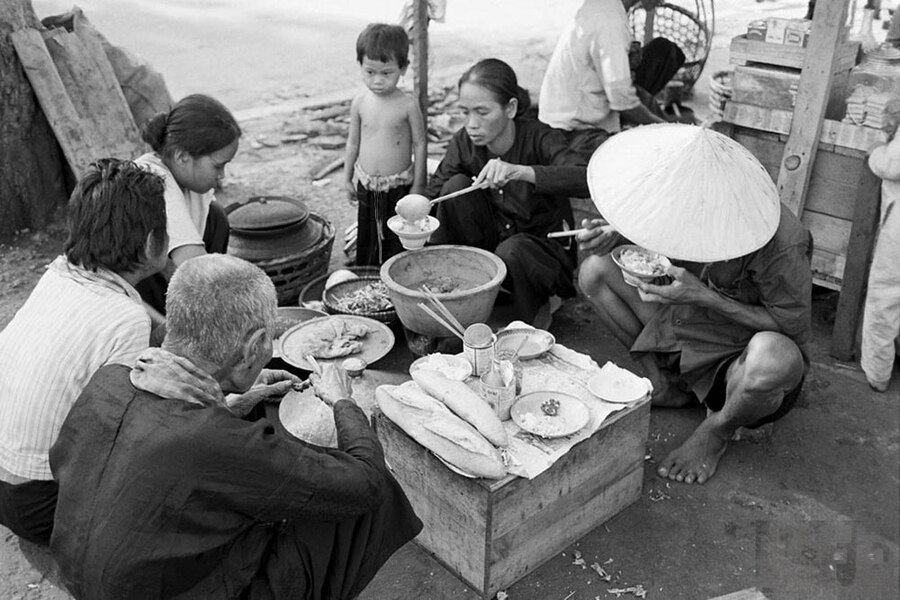
Proper dining etiquette is an integral part of Vietnamese culture. Many rules have been passed down through generations in proverbs and folk songs. While referred to as rules, they are essentially subtle behaviors to be practiced during a meal to demonstrate politeness.
.jpg)
Many Vietnam dining etiquette rules have been passed down through generations
In the previous article, we learned about things to avoid. So, what are the things we should do? As a foreign visitor, learning a few etiquette rules is a way to embrace a new culture. Not only that, but it also helps you avoid potentially awkward situations. In this article, Asia King Travel would like to introduce you to 10 Vietnam dining etiquette.
Waiting for all family members to gather before starting a meal is a beautiful cultural tradition in Vietnam. This practice demonstrates respect and a strong bond between family members. Children also learn valuable lessons about patience and the importance of family gatherings.
After a day of studying and working, everyone gathers for dinner. Sharing stories from the day brings everyone closer. Once you leave home and live independently, you'll realize how precious the cozy atmosphere of family meals truly is. Cherish these precious moments of family togetherness.

Family meals are always the most intimate. Source: Suc khoe & Doi song
If someone is running late, wait for them for a reasonable time. When they can't make it in time, set aside a portion of the food and reheat it later so they can still enjoy a delicious meal.
Inviting others to eat is a beautiful aspect of Vietnamese culture. These seemingly casual invitations teach children to respect their elders and appreciate each other's presence. The Vietnamese educate their children through such small but meaningful gestures.

Vietnamese people teach their children manners from the smallest things
Before eating, children must invite their elders to eat, starting with the eldest person in the household, such as grandparents, then parents, and older siblings. The invitation should be gentle and polite, accompanied by arranging chopsticks and wiping bowls for them. When offering bowls and chopsticks to elders, it is mandatory to use both hands.
Throughout the meal, people will feel uncomfortable if you keep your head bowed, sit crookedly, hunch over your bowl and plate, or shovel food into your mouth.
The proper posture during a meal is to keep your back straight, hands on the table, and head level. When sitting on a mat, men should sit cross-legged, while women should sit with their legs together.
Suggested for you: Cultural Insights: Things to Avoid During a Vietnamese Meal
Historically, women were responsible for household chores, including cooking and serving meals. Scooping rice is an extension of this role. Scooping rice is seen as a gesture of care and nurturing. It signifies the woman's role in providing for her family. Nowadays, this practice is not as common as it used to be. Men are increasingly sharing household work.

The mother or the eldest sister will sit next to the rice pot and serve rice for the whole family. Source: LIFE Magazine
Picking up food for others as a sign of care is a thoughtful gesture during a meal. However, before doing so, turn your chopsticks around to show courtesy and ensure hygiene. It may not be necessary when dining with close family members, remember to do this when eating out.
.jpg)
Use the wider end of your chopsticks if you want to pick up food for someone else
Additionally, you should be mindful of those dining with you. Whether sitting at a table with someone younger, the same age, or older, you should always check if you're eating properly. Eating too much or finishing someone else's portion are examples of inappropriate eating habits.
Placing the spoon or ladle upside down after use is related to hygiene. If someone accidentally touches it, water won't splash out as it would if it were facing up. Any remaining liquid in the bowl is less likely to spill onto the table. An upside-down spoon also looks much tidier.
Vietnamese deeply cherish rice grains, likening them to "pearls from the heavens." Each bowl of rice on the dining table represents the sweat and toil of farmers. Moreover, they cannot forget the famine of 1945, when over 2 million people died from lack of food.
.jpg)
Finish all the food in your bowl, don't waste food
Therefore, finishing your meal is a way to both compliment the delicious food and express gratitude to the cook. They will know your compliment by seeing your empty bowl. Also finishing your meal helps to minimize food waste. Another thing to keep in mind is you should finish the food in your bowl before taking more.
If you and someone else reach for the same dish with chopsticks, politely let them take it first and wait for your turn. Vietnamese people consider it unlucky and rude for multiple people to have their chopsticks crossed while picking up food.
During a meal, your favorite dish may not always be within reach. If you want something far away, ask someone sitting closer to get it. Avoid leaning over to grab the food yourself, as it can disturb others around you.
When taking food, use one hand to hold the chopsticks and pick up the food. With the other hand, lift your bowl and gently guide the food into it. Bring your bowl very close to the serving dish for soups or liquid dishes. The bowl should also be close to your mouth when you eat. This will prevent any accidental spills of food or liquid.

Always hold your rice bowl when you're about to eat
This might seem a bit contradictory to finishing all your food, but leaving a small amount on your plate is a way Vietnamese people show politeness. When dining out, finishing everything might be perceived as being greedy.
Leaving a little food behind is also a way of saying you're full. Even if you finish everything to gratitude the host, they might feel guilty for not offering you enough. They'll likely sneak back to the kitchen and prepare more for you, preferring to have leftovers rather than let you hungry.

Leaving a little food behind is also a sign of politeness
Leaving just a small amount was enough to show that I enjoyed the food offered and was comfortably full. This tiny bit of food intentionally left behind compliments the host. Therefore, according to Vietnamese people, a perfect meal is one where every plate has a little bit of food left over.
Just by delving into some of the main aspects of Vietnamese meal culture, we can already see how meaningful it is. For Vietnamese people, dining has become a way of life. What do you think of these customs? Share your thoughts with Asia King Travel! Or, better yet, experience them firsthand on a trip to Vietnam with us.
Suggested for you: Things You Should Be Aware When Traveling to Vietnam